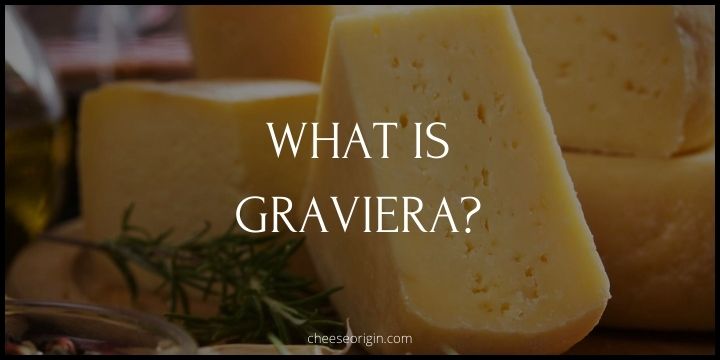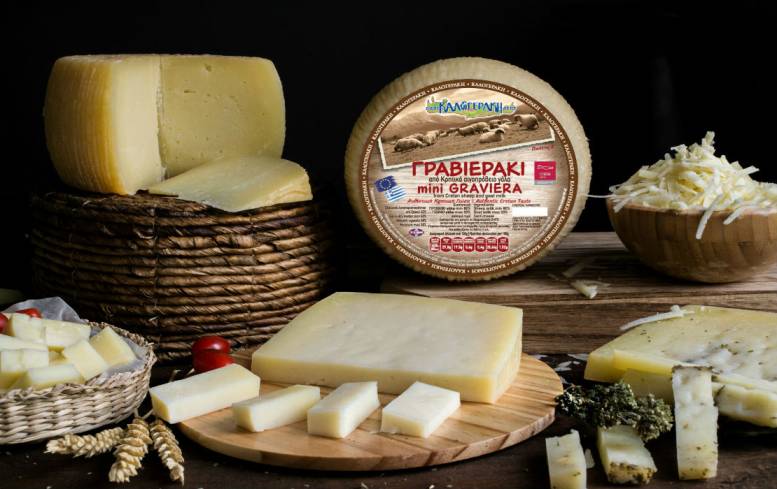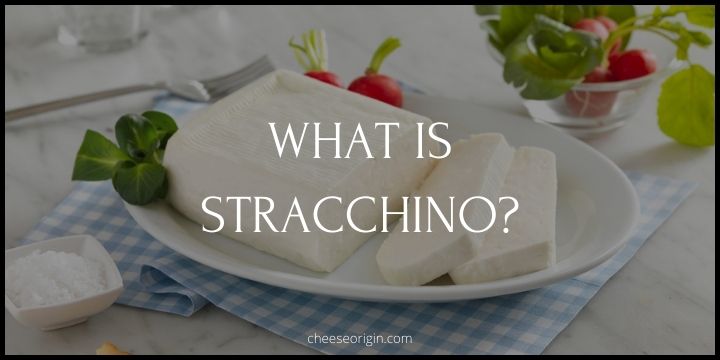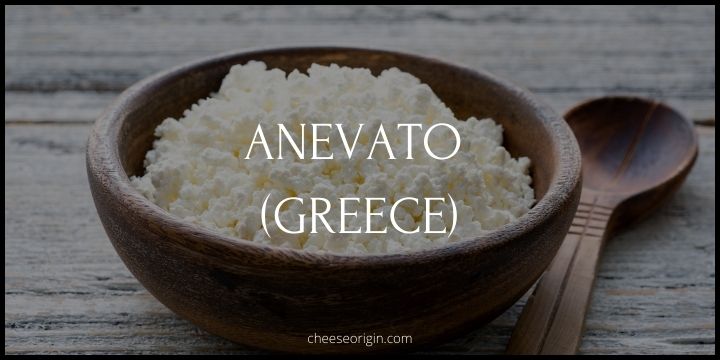What is Graviera? The Greek Cheese Symphony

Originating from Greece, Graviera cheese offers a blend of sweetness and nuttiness that dances on your palate. Made predominantly from sheep’s milk, or a mix of sheep and goat’s milk, Graviera is aged for at least five months, yielding a delightful depth of flavor.
Its distinct light to deep yellow hue, small irregular holes, and hard rind marked with a crisscross pattern from its draining cloth, make it not just a culinary delight but also a visual treat.
Quick Facts About Graviera
| Quick Facts | Details |
|---|---|
| Country of Origin | Greece |
| Type of Milk | Sheep or Cow’s milk, sometimes mixed with goat’s milk |
| Texture | Hard, but slightly springy |
| Taste | Sweet and nutty, with a hint of burnt caramel |
| Color | Pale yellow to golden |
| Aging Time | Minimum 3 months, up to 12 months for more intense flavors |
| Fat Content | Typically 38-40% |
| Pairings | Fresh fruits like apples and pears, honey, nuts, and robust red wines |
| Uses | Table cheese, grating over dishes, served with wine |
| Protected Designation of Origin (PDO) | Yes, for Graviera Naxou and Graviera Kritis |
| Availability | Year-round |
| Shelf Life | Can last several weeks in the refrigerator if properly stored |
| Popular Dishes | Saganaki (fried cheese), in salads, pasta, or on a cheese board |
| Production Process | The curd is cut, heated, pressed into moulds, salted in brine, and then aged |
| Health Benefits | High in protein and calcium, contains probiotics |
What is Graviera?

Graviera, a name that resonates with the symphony of Greek culinary artistry, is a cheese that truly captures the essence of Greece’s gastronomic legacy. Originating from the idyllic landscapes of this Mediterranean country, Graviera stands as a testament to the timeless charm of traditional cheesemaking.
This hard cheese, crafted predominantly from sheep’s milk or a blend of sheep and goat’s milk, carries a distinctive sweet and nutty flavor profile. It dances on your palate with hints of burnt caramel, offering an experience that is both delightful and memorable. The texture of Graviera is uniquely intriguing – it’s hard, yet carries a slightly springy feel that enhances its appeal.
The beauty of Graviera lies not only in its taste but also in its versatility. As a table cheese, it pairs exquisitely with fresh fruits like apples and pears. When grated, it adds a delightful touch to pasta dishes, salads, and more. And for those who enjoy the simple pleasures of a cheese board, Graviera makes for an irresistible component.
What sets Graviera apart is its aging process. Aged for a minimum of three months, and up to twelve for a more intense flavor, Graviera develops a pale yellow to golden color that is visually appealing. The longer it ages, the richer the flavor becomes, taking you on a journey through the diverse landscapes of Greek gastronomy.
What Does Graviera Taste Like?
Graviera offers a unique flavor profile that is both complex and delightful. It’s characterized by a sweet and slightly nutty taste that sets it apart from other cheeses. Depending on the region in Greece where it’s made, the flavors can vary subtly.
Graviera from Crete, for instance, boasts a distinctive burnt-caramel flavor that adds a layer of depth to its overall taste. Naxos’ variant of Graviera, made primarily from cow’s milk, retains the characteristic sweetness but carries its own unique nuances.
Beyond its sweetness, Graviera also has fruity notes, particularly when it’s young. As it matures, it develops a rich, grassy aroma, and in some cases, you might even detect a touch of spiciness or a goaty undertone. Despite these variations, one thing remains consistent: Graviera always offers a pleasant organoleptic experience.
In terms of texture, Graviera is a hard cheese with a light yellow color. It has a slightly salty, buttery taste that complements its sweetness, creating a well-rounded flavor profile. The cheese also has the pleasant aroma of milk, enhancing the overall sensory experience.
Graviera Tasting Notes
- Appearance: Graviera is a hard cheese with a pale yellow to golden color. It has small, irregular holes scattered throughout its body.
- Texture: The texture of Graviera is hard but slightly springy. It’s not crumbly like some hard cheeses and has a pleasing bite to it.
- Aroma: Graviera has a pleasant aroma that is reminiscent of milk. As it matures, it develops a rich, grassy scent that enhances the overall sensory experience.
- Flavor: Graviera is characterized by its sweet and slightly nutty flavor. Depending on its origin, it may also have a hint of burnt caramel, a touch of spiciness, or a goaty undertone.
- Aftertaste: The aftertaste of Graviera is long-lasting and pleasant. It leaves a sweet, buttery finish on the palate.
What is the Difference Between Graviera and Gruyere?
| Graviera | Gruyere | |
|---|---|---|
| Origin | Greece, mainly produced in Crete, Lesbos, Naxos, and Amfilochia | Switzerland |
| Milk Used | Mainly sheep’s milk or a mix of sheep and goat’s milk | Cow’s milk |
| Flavor Profile | Sweet and nutty flavor. It can also have a hint of burnt caramel, a touch of spiciness, or a goaty undertone depending on the region it’s made in | Nutty and slightly sweet, becoming more earthy and complex with age |
| Texture | Hard yet slightly springy texture, with small irregular holes | Firm and dense, with few small holes |
| Aging Process | Aged for a minimum of three months, up to twelve for a more intense flavor | Typically aged between 5 to 12 months, with some versions aged up to 10 years |
| Uses | Table cheese, grated over dishes, used in salads, pasta dishes, or on a cheese board. Popular in the Greek fried cheese dish, Saganaki | Often used in cooking, particularly in baked dishes like fondues and quiches. Also eaten on its own or with bread |
| Popularity | Very popular in Greece, gaining popularity worldwide | Well-known and widely used worldwide |
>> Click here to read our in-depth guide on Gruyere
What is Graviera Used for?
- Cheese Board: Graviera is a star addition to any cheese board, offering a delightful contrast with its sweet and nutty flavor. It pairs well with fresh fruits, honey, and robust red wines.
- Cooking: Graviera’s melting properties make it an excellent choice for cooking. You can use it in pasta dishes, risottos, or baked goods for a burst of Greek flavor.
- Grilled or Fried Cheese: Graviera is the cheese of choice for making ‘Saganaki’, a popular Greek dish where the cheese is fried until melty and golden.
- Salads: Its unique flavor adds depth to salads. Grate it over a classic Greek salad for an authentic touch or cube it and add it to a mixed green salad.
- Sandwiches and Burgers: Graviera can be used in sandwiches and burgers, either grated or in slices. Its rich flavor enhances the overall taste of these dishes.
- Pizza Topping: Graviera can be used as an interesting alternative to mozzarella on pizzas. Its nutty sweetness adds a unique twist to your classic pizza recipe.
- Pairing with Wine: Graviera pairs excellently with a variety of wines, especially full-bodied reds. It is perfect for wine-tasting events or a simple evening of relaxation.
- Dessert Cheese: Due to its slight sweetness, Graviera can be served as a dessert cheese. Combine it with fruits like pears and apples, or drizzle it with honey for a decadent treat.
- Grating Over Dishes: Much like Parmesan, Graviera can be freshly grated over dishes just before serving. It adds a wonderful flavor boost to pasta, soups, and stews.
10 Best Graviera Substitutes
| Substitutes | Short Description | Origin |
|---|---|---|
| Gruyère | A hard yellow cheese with a slightly sweet, nutty flavor. It’s known for its melting properties | Switzerland |
| Emmental | Characterized by its large holes, Emmental has a savory but mild taste | Switzerland |
| American Swiss Cheese | Similar to Emmental but produced in America. It has a mild and nutty flavor | United States |
| Comté | Aged cheese with a complex flavor that can include notes of fruit, nuts, caramel, and even chocolate | France |
| Fontina | Semi-soft cheese known for its earthy, mushroomy, and woody taste. It melts well | Italy |
| Beaufort | Firm and dense cheese that is slightly sweet and buttery. It’s excellent for melting | France |
| Jarlsberg | Known for its characteristic large, round holes and sweet, nutty flavor | Norway |
| Gouda | Comes in varieties ranging from young and mild to aged and intense. It has a sweet, creamy, and nutty flavor | Netherlands |
| Raclette | A semi-hard cheese that is most commonly used for melting. It has a creamy texture and a distinctive, pungent aroma | Switzerland |
| A Mix of Fontina Cheese and Parmesan Cheese | Fontina provides a creamy, nutty flavor while Parmesan adds a salty, umami kick | Italy |
What Pairs Well With Graviera?

Food that goes well with Graviera:
| Category | Foods That Pair Well with Graviera |
|---|---|
| Fruits | Apples, Pears, Grapes, Figs |
| Nuts | Almonds, Pistachios, Walnuts, Hazelnuts |
| Bread/Crackers | Sourdough Bread, Rye Crackers, Pita Bread, Whole Grain Crackers |
| Meats | Prosciutto, Salami, Smoked Turkey, Roast Beef |
| Condiments | Honey, Fig Jam, Olive Tapenade, Balsamic Vinegar |
| Vegetables | Roasted Red Peppers, Olives, Pickles, Sun-Dried Tomatoes |
| Seafood | Anchovies, Grilled Shrimp, Smoked Salmon |
| Desserts | Dark Chocolate, Baklava, Greek Honey Pastries, Apple Pie |
| Grains | Quinoa, Farro, Wild Rice, Orzo Pasta |
Also read: 11 Best Crackers that Pair Well with Cheese
Beverage that goes well with Graviera:
| Category | Beverages That Pair Well with Graviera |
|---|---|
| White Wine | Chardonnay, Sauvignon Blanc, Riesling |
| Red Wine | Pinot Noir, Merlot, Syrah |
| Rose Wine | Dry Rosé, Provence Rosé |
| Sparkling Wine | Champagne, Prosecco, Cava |
| Beer | Belgian-Style Ale, Wheat Beer, Pilsner |
| Spirits | Brandy, Whisky, Bourbon |
| Non-Alcoholic | Apple Juice, Grape Juice, Iced Tea |
Also read: Top 10 Champagne & Cheese Pairings to Try at Least Once
Frequently Asked Questions
1. What kind of cheese is Graviera?
Graviera is a type of Greek cheese. It is one of the most popular cheeses in Greece. It’s typically made from sheep’s milk or a mix of sheep and goat’s milk. It’s often used in a variety of dishes including pasta, pies, and cheese platters. The aging process of Graviera can vary, but it’s usually aged for at least five months. Its texture and flavor make it suitable for grating, slicing, and melting.
2. Is Graviera cheese hard or soft?
Graviera is a hard cheese. It is often characterized by its light to deep yellow color, small irregular holes, and a hard rind.
Also read:
- What is Pasta Filata? Italy’s Stretched-Curd Cheese
- What is Mastelo Cheese? Greece’s Hidden Delicacy
- Top 11 Most Popular Semi-soft Cheeses in the World
- Top 10 Most Popular Cheeses in Ireland
- What is Lanark Blue? Scotland’s Roquefort Revolution
- What is Gorgonzola Piccante? Italy’s Sharp Blue Cheese Wonder
- What is Gorgonzola Dolce? Italy’s Creamy Blue Treasure





